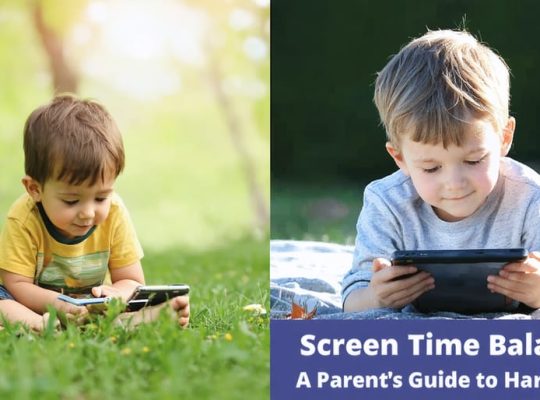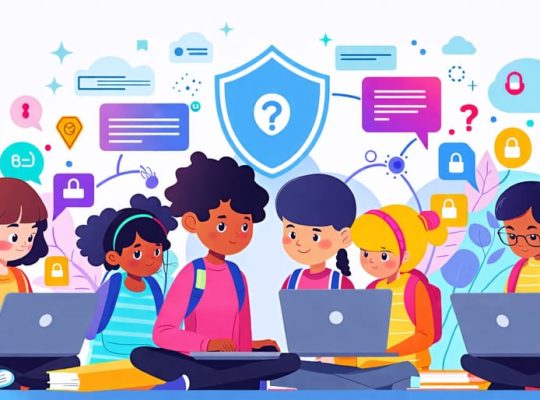Technology has become an inescapable part of modern life, transforming how we work, learn, socialize and spend our free time. While innovations like smartphones, social media and video games offer many benefits, a growing body of research suggests that excessive screen time and technology use can take a serious toll on our mental well-being, especially for children and teens. From addiction-like behaviors to increased rates of depression and anxiety, it’s crucial that we examine the potential dark side of our increasingly digital lives. Only by understanding the risks can we find balance and protect our mental health in this hyper-connected age.

The Lure of Screens: Understanding the Problem
The Dopamine Effect
Many apps and games are designed to keep users hooked by exploiting the brain’s reward system. They utilize techniques like variable rewards, social validation, and endless scrolling to create a compulsive cycle of engagement. This overstimulation floods the brain with dopamine, the neurotransmitter associated with pleasure and motivation. Over time, the brain adapts to this heightened level of stimulation, requiring more and more to achieve the same effect. This can lead to a phenomenon known as the “dopamine effect,” where users become dependent on the constant stream of digital rewards. Excessive screen time can disrupt the natural balance of the brain’s reward system, making it harder to find joy and fulfillment in real-world experiences. Children and teens are particularly vulnerable to this effect, as their brains are still developing. The dopamine effect can contribute to symptoms of anxiety, depression, and attention difficulties, as well as interfere with sleep, relationships, and overall well-being. It’s crucial for parents and caregivers to be aware of these risks and take steps to promote healthy technology habits.
Lost Connections
In today’s digitally connected world, excessive screen time can lead to a troubling paradox: feeling more isolated despite being constantly “connected.” When children and teens spend hours absorbed in their devices, they miss out on vital in-person interactions that nurture social skills and empathy. Face-to-face conversations, shared experiences, and non-verbal cues are essential for building and maintaining healthy relationships. Without these real-world connections, young people may struggle to form deep, meaningful bonds with others.
Moreover, the curated nature of social media can fuel feelings of loneliness and inadequacy. Constantly comparing oneself to the highlight reels of others’ lives can erode self-esteem and create a distorted view of reality. This sense of disconnection can be particularly acute for those who already struggle with social anxiety or shyness, as they may retreat further into the perceived safety of online interactions.
To foster genuine connections, it’s crucial to encourage a balanced approach to technology use. Engage in regular device-free family time, prioritize in-person socializing, and model healthy tech habits. By nurturing authentic relationships and empowering children to navigate the digital world responsibly, we can help them build the social-emotional skills necessary for lifelong well-being.
Warning Signs to Watch For

Mood and Behavior Changes
Excessive technology use can lead to concerning mood and behavioral changes in children and teens. Watch for signs like increased irritability, angry outbursts, or seeming “on edge” when away from devices. Withdrawing from friends, family, and previously enjoyed activities in favor of more screen time is another red flag. Some kids may appear lethargic, sad, or disinterested in daily life. Dishonesty about the amount of time spent online or sneaking devices are also signs of a problem.
Sleep problems are common, as late-night tech use disrupts healthy sleep patterns. This can worsen moodiness and impulsive behaviors. Struggling to focus on schoolwork, chores, or conversations is another warning sign. In more severe cases, children may express feelings of anxiety, depression, or even suicidal thoughts. If you notice any of these concerning changes, don’t hesitate to talk to your child and seek help from a mental health professional experienced in tech addiction issues.
Academic and Social Difficulties
Excessive screen time and technology use can lead to academic and social difficulties for children and teens. When kids spend too much time on devices, they may struggle to concentrate in class, procrastinate on homework, or even skip school. This can result in falling grades and learning gaps. Socially, kids immersed in digital worlds may miss out on face-to-face interactions crucial for developing social skills, empathy, and strong friendships. They may feel isolated, struggle to relate to peers, or even face bullying online. It’s important for parents and educators to set reasonable boundaries around technology use, encourage offline activities and hobbies, and foster open communication. If a child seems withdrawn, anxious, or is struggling in school, it may be time to reassess their relationship with devices. With support and balance, kids can learn to use technology in healthy ways while still thriving academically and socially.
Finding Balance in a Digital World
Creating a Family Media Plan
Creating a family media plan is a proactive way to establish healthy boundaries around technology use. Start by having an open, honest discussion with your children about the importance of balance. Together, set clear guidelines on when, where, and how long screens can be used each day. Consider implementing “screen-free zones” in bedrooms and during mealtimes to foster face-to-face connection.
Be mindful of age-appropriate content and privacy settings on devices and apps. Encourage a diverse range of activities, including outdoor play, hobbies, and socializing with friends. Model healthy habits by setting a positive example with your own technology use.
Regularly check-in with your children about their online experiences and maintain an ongoing dialogue. Collaborate to adjust the plan as needed, ensuring it evolves with your family’s changing needs. Remember, the goal is not to eliminate technology altogether, but to teach responsible, mindful usage that supports overall well-being.
Prioritizing Human Connection
In our increasingly digital world, it’s crucial to prioritize human connection for our children’s mental well-being. While technology offers many benefits, it should never replace the importance of family time, outdoor play, and in-person socialization. Engaging in regular face-to-face interactions with loved ones helps children develop strong emotional bonds, empathy, and social skills. Encourage your child to put down their devices and spend quality time with family, whether it’s through shared meals, game nights, or heartfelt conversations.
Outdoor play is another essential aspect of fostering human connection and promoting mental health. Running, jumping, and exploring nature with friends allows children to disconnect from screens, engage in physical activity, and build meaningful relationships. Encourage your child to participate in sports teams, join clubs, or simply play with neighborhood friends.
Remember, balance is key. While it’s unrealistic to eliminate technology entirely, establishing healthy tech habits and boundaries can help ensure that your child’s digital life doesn’t overshadow their real-life connections. By prioritizing human connection, you’re giving your child the tools they need to build a strong foundation for their mental health and well-being.

When to Seek Help
It can be difficult to know when technology use has crossed the line from a normal part of life to a problem that requires professional help. Some signs that it may be time to seek support include withdrawal from friends and family, declining school or work performance, loss of interest in other activities, secretive behavior around devices, and changes in mood or sleep patterns.
If you’ve tried setting boundaries and implementing strategies to manage technology use but are still struggling, it’s important to reach out. A mental health professional who specializes in behavioral addictions can assess the situation and provide individualized recommendations. They may suggest therapy, such as cognitive-behavioral therapy (CBT), which can help identify unhealthy patterns and develop coping skills.
Many therapists now offer teletherapy options, making it more convenient to access support. Organizations like the American Psychological Association and Psychology Today have online directories to help find licensed providers in your area. If you have insurance, your provider may also have resources available.
For crisis situations or if you need to talk to someone immediately, hotlines like the National Parent Helpline (1-855-427-2736) and the Crisis Text Line (text HOME to 741741) are available 24/7. Remember, seeking help is a sign of strength, not weakness. With the right support, it is possible to find a healthy balance with technology.
Conclusion
In conclusion, promoting healthier technology habits is crucial for supporting the mental well-being of our children in today’s digital age. By understanding the potential risks, recognizing warning signs, and implementing positive strategies, we can empower kids to develop a balanced relationship with screens. Remember, small changes can make a big difference – setting clear boundaries, encouraging offline activities, and modeling healthy habits ourselves. If you have concerns about your child’s mental health, don’t hesitate to reach out for professional support. With awareness, compassion, and proactive steps, we can help the next generation thrive both online and off. Together, let’s cultivate a future where technology enhances rather than hinders the social-emotional development and overall well-being of our children. Every child deserves the opportunity to grow up in a nurturing environment that promotes genuine human connection, fosters resilience, and allows them to reach their full potential.







